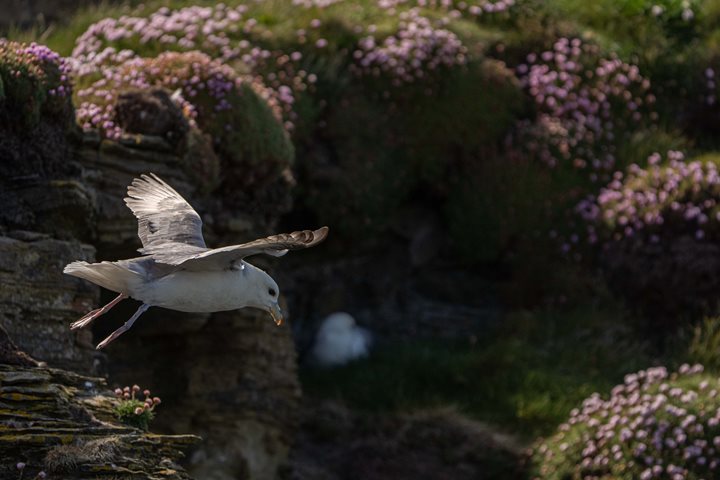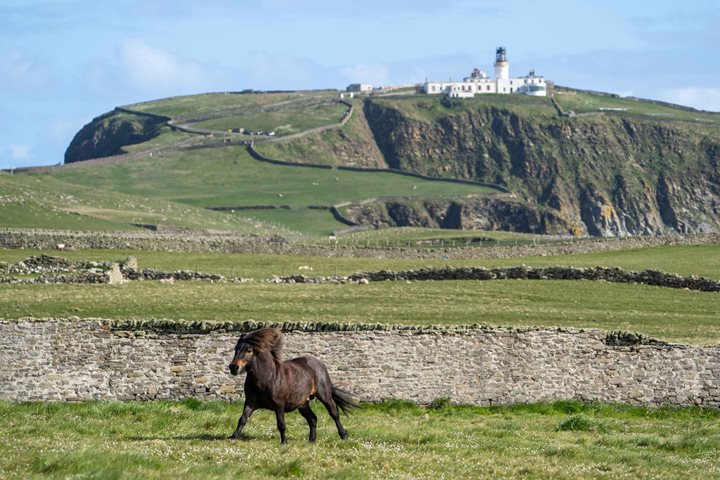Every day should begin with dolphins! As the sun rose over Ireland, National Geographic Explorer approached the Skelligs with common dolphins under the bow. Calm conditions allowed us to cruise close by Skellig Michael and Little Skellig, giving us spectacular views of the largest gannet colony in Ireland as well as the monastic settlements.
After getting our fix of seabirds, we made our way to Valentia Island where we had the option of either visiting the tetrapod footprints or hiking to a 19th-century beacon. After lunch, the ship repositioned up the coast while we learned about some of the incredible wildlife research being carried out by University College Cork. After lunch, guests disembarked for an afternoon of discovering Dingle and the surrounding area.







